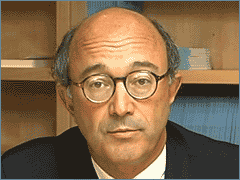 | |
 |
 |  |
 |
Cardiac hypertrophy, an excessive growth of cardiac muscle, can impede the heart's own operation.

     | |
 |
 |
 |
 |
Using a resting echocardiogram, physicians can measure the size and thickness of the chambers to determine their level of hypertrophy and its potential impact on function. For patients who face an increased genetic risk, we can screen other family members to determine who else might be affected. When hypertrophy involves only a portion of the patient's heart and does not interfere with overall cardiac function, physicians typically choose to treat the condition medically.
For more advanced cases, or for cases involving the interventricular septum, physicians can choose an angiogram approach. In this technique, we inject alcohol directly into a feeder artery for this region, intentionally causing the destruction of that area of muscle—essentially a heart attack by design. This destruction thins the muscle quantity, allowing blood to flow more freely while leaving enough normal muscle to create normal contraction of the heart.
Prior to the development of the angiogram approach, surgeons opened the heart and literally cut away the excess muscle, physically removing the obstruction. The newer techniques, however, are beginning to show demonstrable success, and innovative pacemakers have also afforded some benefit. Patients whose hypertrophy fails to respond to these medical and surgical alternatives may ultimately require heart transplantation.
 
|





